What we´re reading…
This month’s key articles selected by Ryan Chadha, Prashant Bhangui, Uzung Yoon, David Victor, Felipe Alconchel, and Tamer Shaker.
Transplantation
Controlled DCD Liver Transplantation Is not Associated With Increased Hyper-fibrinolysis and Blood Loss After Graft Reperfusion
The specific effect of donation after circulatory death (DCD) liver grafts on fibrinolysis, blood loss, and transfusion requirements after graft reperfusion is not well known. The aim of this study was to determine whether transplantation of controlled DCD livers is associated with an elevated risk of hyper-fibrinolysis, increased blood loss and higher transfusion requirements upon graft reperfusion, compared to livers donated after brain death (DBD). Read more.
World Journal of Surgery
Fast-Track Liver Transplantation: Six-year Prospective Cohort Study with an Enhanced Recovery After Surgery (ERAS) Protocol
Enhanced recovery after surgery (ERAS) has been shown to facilitate discharge, decrease length of stay, improve outcomes and reduce costs. We used this concept to design a comprehensive fast-track pathway (OR-to-discharge) before starting our liver transplant activity and then applied this protocol prospectively to every patient undergoing liver transplantation at our institution, monitoring the results periodically. We now report our first six years results. Read more.
Cardiovascular Revascularization Medicine
Diagnostic yield of coronary angiography in asymptomatic orthotopic liver transplantation candidates
The ideal cardiac risk stratification strategy for orthotopic liver transplantation (OLT) is unknown. Our institution performed coronary angiography for asymptomatic OLT candidates at high risk for CAD: ≥65 years of age, diabetic and ≥55 years of age or diagnosed ≥5 years, abnormal stress test, or at the discretion of the OLT committee. Read more.
Transplantation
Usefulness of Controlled Attenuation Parameter and Liver Stiffness Measurement for the Identification of Extended-criteria Donors and Risk-assessment in Liver Transplantation
Controlled attenuation parameter (CAP) and liver stiffness measurement (LSM) are noninvasive surrogates for hepatic steatosis and fibrosis, respectively, and could help identify extended criteria donors in liver transplantation (LT). We aimed to determine the accuracy of CAP/LSM in deceased donors along with post-LT changes. Read more.
Liver Transplantation
Renal outcomes after Simultaneous Liver and Kidney Transplantation (SLKT): Results from the US Multicenter SLKT Consortium
SLKT is increasingly common in the United States (US). However, little is known about the renal-related outcomes following SLKT, which will be essential to maximize the health of these allografts. We examined the factors impacting renal function following simultaneous liver-kidney transplant (SLKT). Read more.
Clinical Transplantation
Transplantation of Liver from Hepatitis C-infected Donors to Hepatitis C RNA Negative Recipients: Histological and Virologic Outcome
The virologic and histologic outcomes of a Hepatitis C virus(HCV) infected liver graft into an HCV negative recipient are not well understood. We aim to evaluate the sustained virologic response (SVR) rate and the liver histology at 1-year post-OLT with an HCV infected graft. Read more.
Transplantation
Operative Technique of Donor Organ Procurement for En Bloc Heart-Liver Transplantation
Biliary atresia (BA) is the leading indication Combined heart-liver transplant is an emerging option for patients with indications for heart transplantation and otherwise prohibitive hepatic dysfunction. Read more.
Annals of Surgery
Renoportal Anastomosis during Liver Transplantation in Patients with Portal Vein Thrombosis: First Long-Term Results from a Multicenter Study
To evaluate the short- and long-term outcomes of renoportal anastomosis (RPA) in a large multicentric series.Summary background: The current knowledge on RPA for portal reconstruction during liver transplantation (LT) in patients with diffuse portal vein thrombosis (PVT) and a large splenorenal shunt (SRS) is poor and limited to case reports and small case series. Read more.
Transplant International
Initial piggyback technique facilitates late liver retransplantation
Optimal management of inferior vena cava (IVC) is crucial to ensure safety in late liver retransplantation (ReLT). The aim of this study was to evaluate different surgical strategies with regard to IVC in late ReLT. Read more.
Intensive Care Med
Organ donation after controlled cardiocirculatory death: confidence by clarity
In this editorial, authors review the current issues some healthcare professionals and institutions still face across Europe in the context of controlled donation after cardiac or cardiocirculatory death (cDCCD) and explore further steps likely to contribute to broader acceptance of this procedure. Read more.
Intensive Care Med
Expanding controlled donation after the circulatory determination of death: statement from an international collaborative
This Collaborative Statement of an international expert group aims to clarify some of the clinical, ethical, legal, and practical aspects of cDCCD. It describes the specific challenges of determining a prognosis that justifies a decision to withdraw life-sustaining treatment (WLST), establishes measures of perfusion maintenance to optimize transplantable organs’ function and highlights the value of perfusion repair for increasing the success of cDCDD organ transplantation. Read more.





